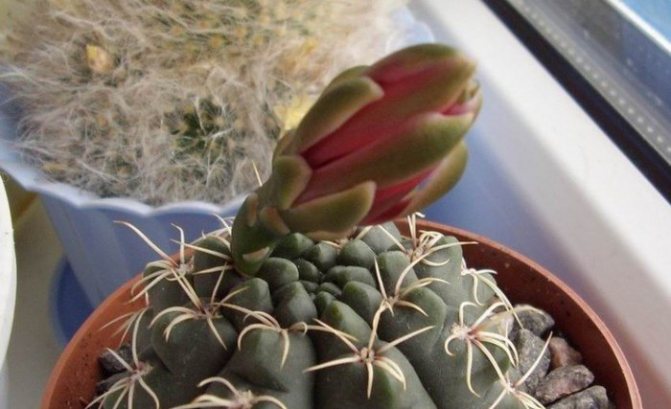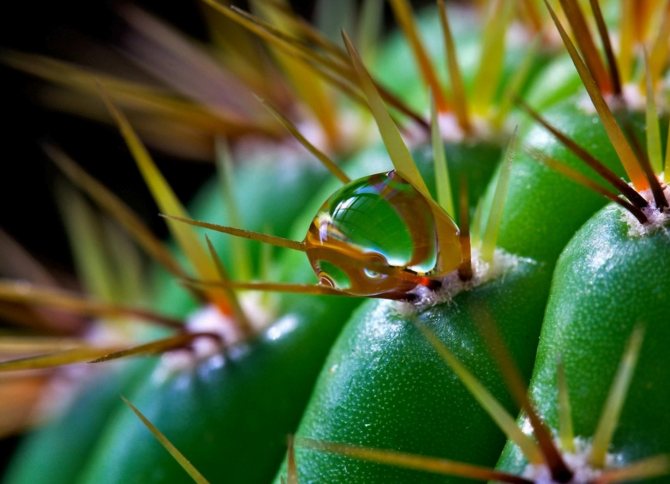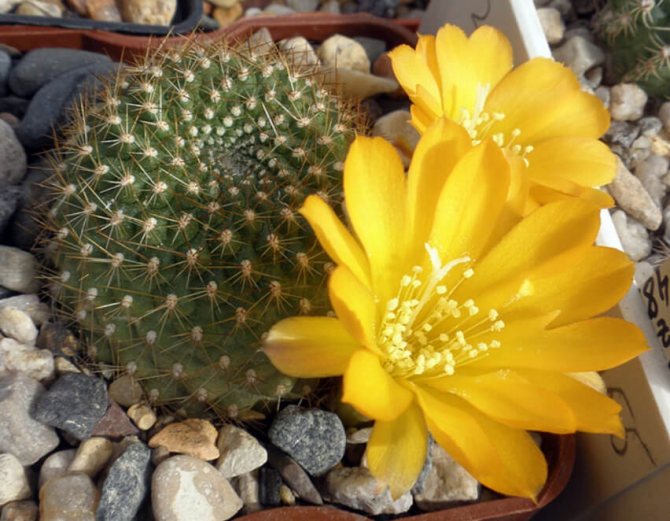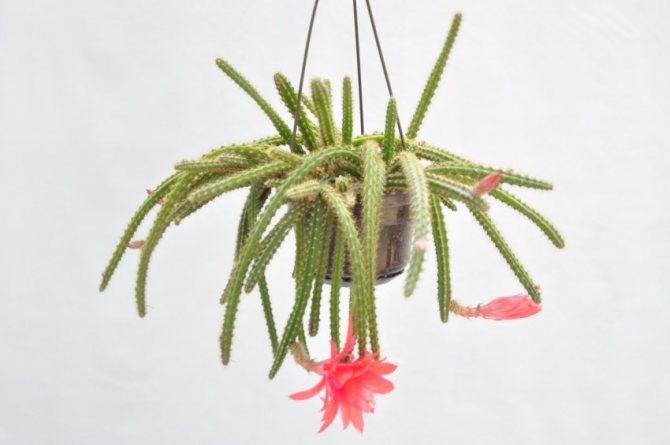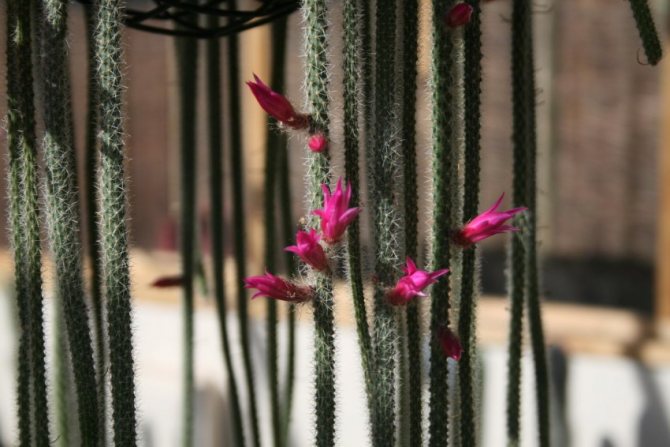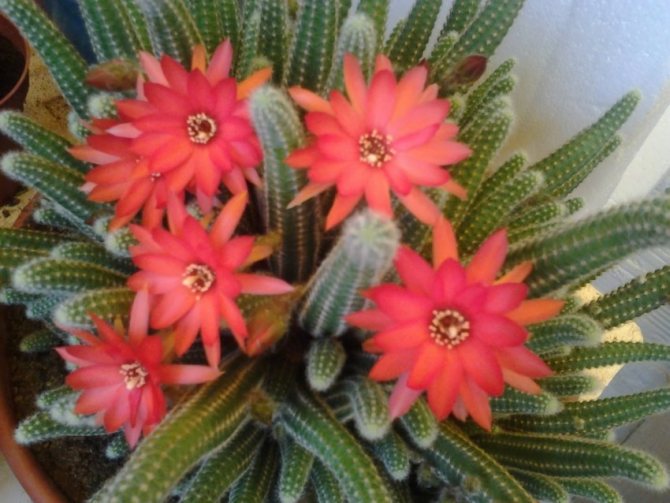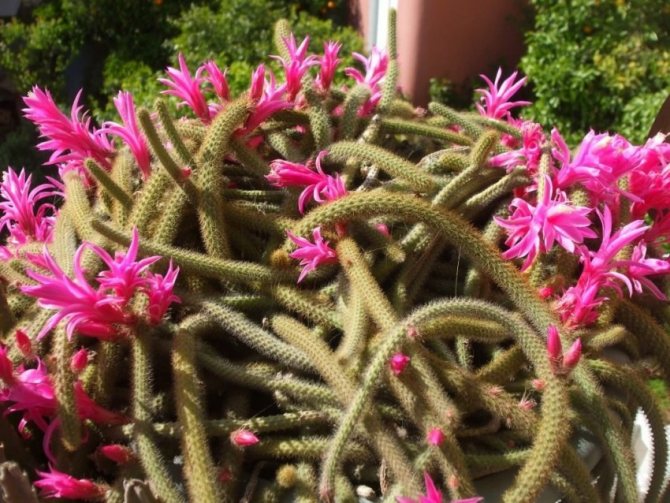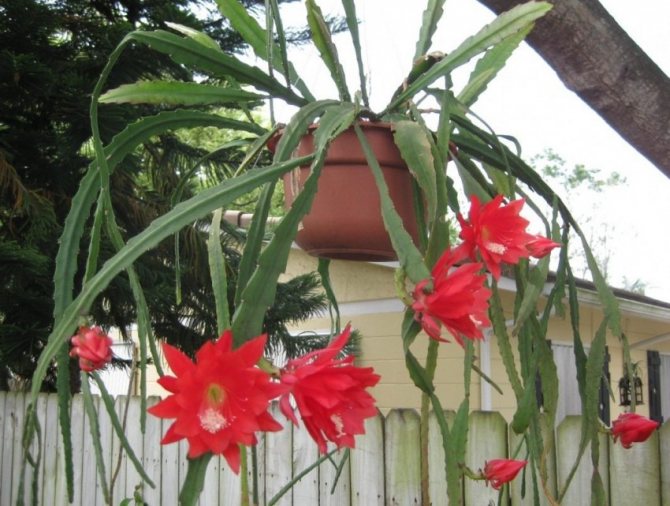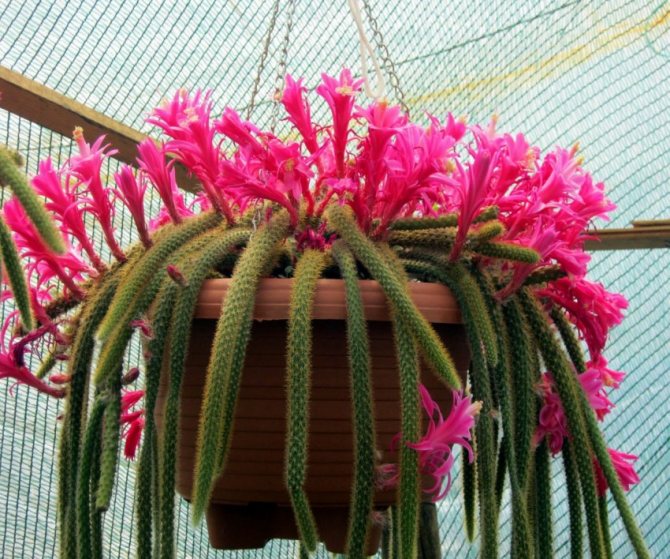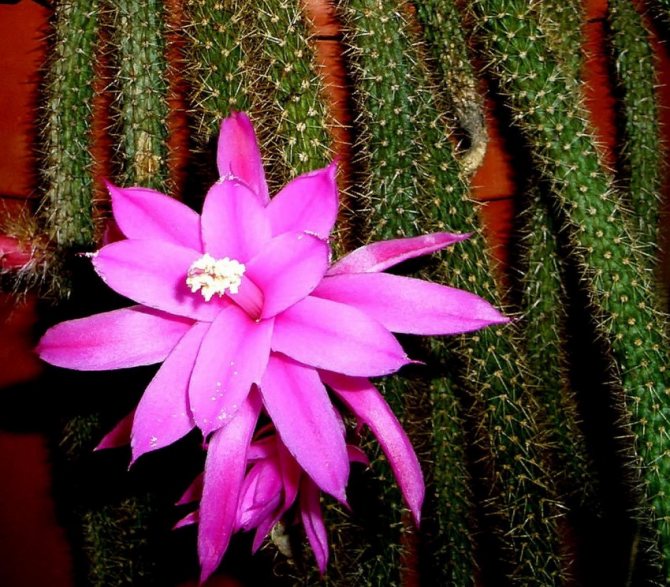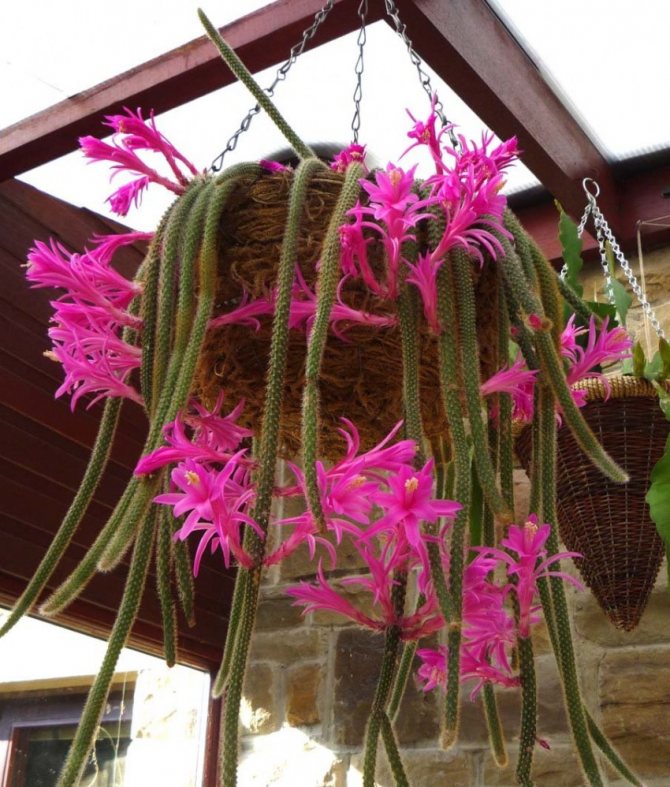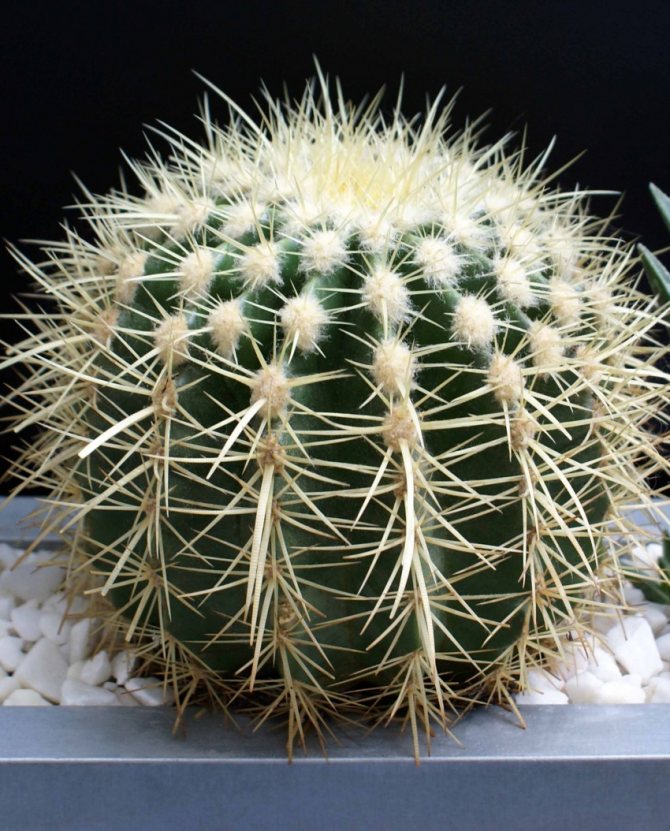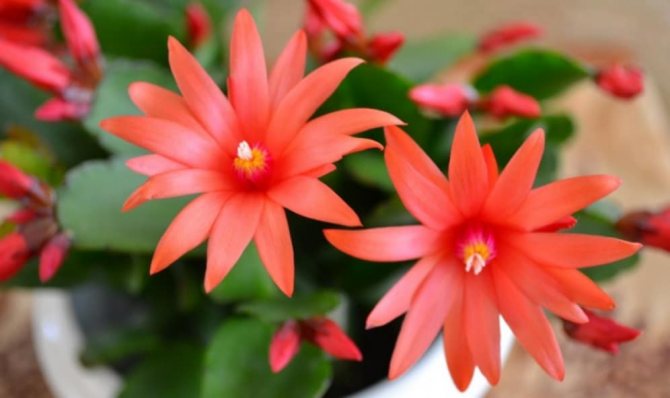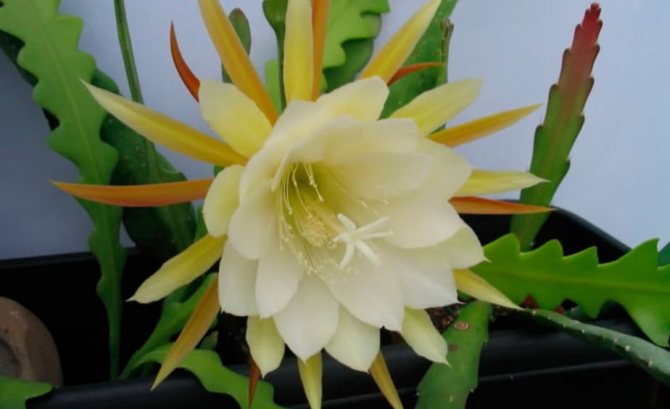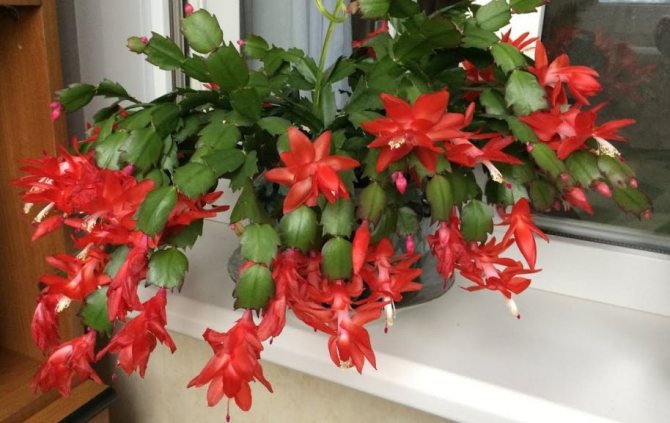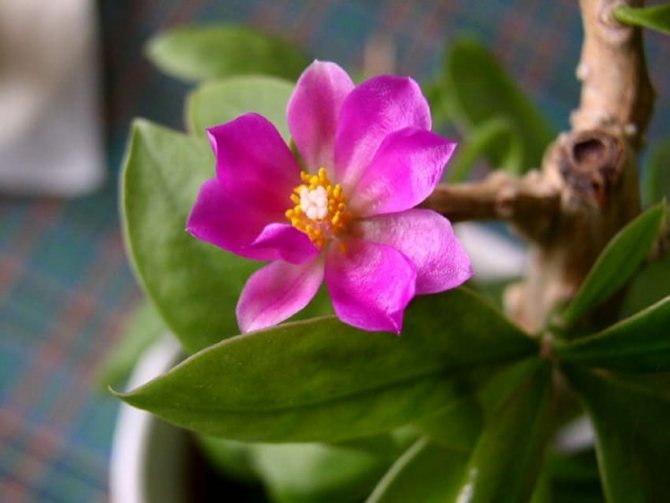Personally, I am very sensitive to flowers, if I buy a plant or give it to me, then I try to create such comfort so that they live well. But this is not always possible to do, since our climatic conditions do not have a beneficial effect on the plant, on the contrary, too reverent concern, which begins to give a reverse reaction. Here you need a middle ground, or the choice of a plant that will not bring you any particular trouble.
What a cactus needs:
- heat
- some water
- the sun
Although, if we consider the plants in a little more detail, we will see that, for example, spathiphyllium, or as it is also called "Women's Happiness", although it is considered an unpretentious plant, it is still capricious from time to time. For example, in order for a plant to constantly bloom, it cannot be planted in a pot that is too large, otherwise it will fundamentally stop doing it. It will wait until the root system fills the entire space, and only then it will begin to bloom.
And then many have the idea to buy home cacti, also plants, bloom very rarely, but for that they are not whimsical and do not require special care. But it seems to me that you are still wrong, because any plant, even a cactus, needs its own care. You can buy a cactus Mix at home, but a legitimate question arises, how to care for a cactus mix?
Features of cacti
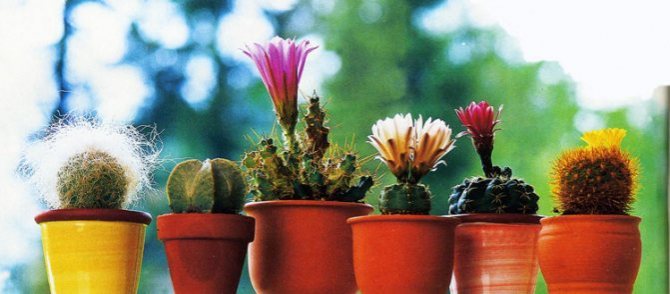
The homeland of cacti is America. In the wild, cacti are capable of growing to significant sizes. Desert cacti thrive and thrive in the harsh semi-desert conditions found in Argentina, Chile, Mexico, Peru and Bolivia. Forest cacti in natural conditions can be found in the tropical jungle. Desert as well as forest species of cactus have significant differences, and in this regard, how to care for a cactus is determined by its type.
Drainage for cactus
For cacti, drainage is essential. Even drainage holes will not exclude stagnation of water in the roots, because excess water remains in the sump, from where it is not always possible to drain it. Good drainage will surely keep the cactus from stagnant water. The dimensions of the drain are relative - at least 1/6 of the volume of the pot, maximum - 1/3. As a drainage, you can use expanded clay, small pieces of red broken brick, small crushed stone, and for lack of a better piece of foam.
Broken egg shells are also added to the drain. It is desirable for drainage, or you can simply add pieces of charcoal (preferably birch) charcoal to the soil mixture.
Childish occupation


Any specialist will tell you directly that an artificial hole in the human body can cause a specific infection. Punctures in the mouth (tongue and lips) are widespread among young people, and it is in these places that the puncture is a threat!


But earrings in the navel area are a less dangerous type of piercing (of course, with proper care). Healing in this area is not as easy as after ear piercing.
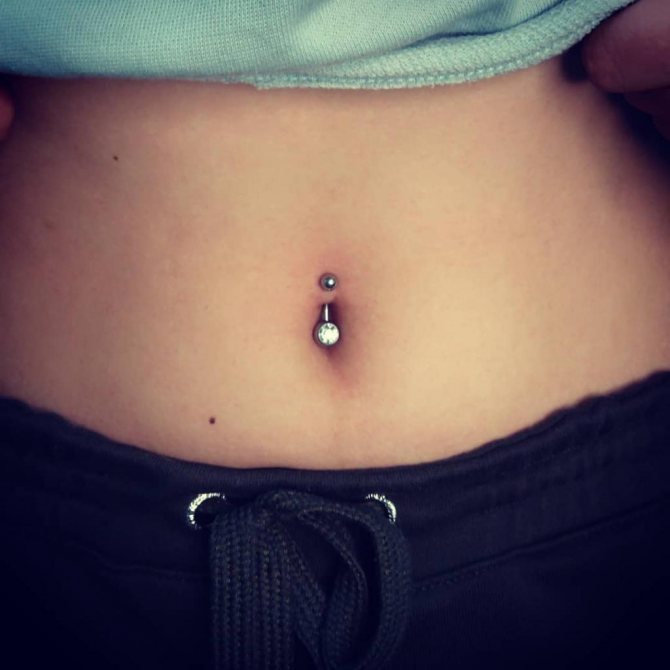

If you take care of your belly button piercing very seriously, then on average it takes about six months.
25 children of a childless man: an extraordinary reunion
Paralympian Talay without arms and legs: "the harder the fight, the more significant the victory"
Seven daily habits of happy people
Transplant immediately after purchase
Immediately after purchase, the cactus must be transplanted into a new pot. This is done so that the plant adapts to new conditions and can grow large. There are two ways to transplant:
- into new soil with complete removal of the old one. It is necessary to soak a peat ball in slightly warm water and rinse the roots of the plant. Then it will take a couple of days for the soil to dry out, and only then a cactus is planted in it. This option is good because there will definitely be no pests in the soil, however, there is a possibility that the plant will not be able to adapt to new conditions, since it will have to spend a lot of energy on restoring roots;
- transfer-transshipment with preservation of greenhouse soil. The advantage of this method is that the plant perceives it as less traumatic, and quickly gets used to new conditions. During the transshipment, the cactus is transplanted into a new large pot with a lump of old soil, and new soil is poured on top. The disadvantages of this method include the drying out of the roots due to the old soil layer and the presence of pests in it, which cannot always be seen.
Before transplanting, you need to study the information about the type of cactus. This will allow you to find out the features of the plant and prevent mistakes when caring for it.
Varieties


At home, dwarf cacti are often grown, they were born with the help of breeders. You can purchase a huge number of miniature varieties, while placing several dozen of them on the windowsill will not be difficult.
The most popular of the domestic desert cacti are such as: Knippel's Echinocereus and Crested, Peruvian Cereus, Acorocactus whip-shaped, Notocactus, Opuntia, Dwarf Rebution, Echinopsis, Gruson's Echinocactus, Chamecereus asterozoa Sylstofystumy, Espieroglaya aspiregia
The varieties of forest cacti grown at home do not have external similarities with the cacti that are familiar to everyone. In the wild, they prefer to grow under or on trees. At home, epiphyllum, ripsalidopsis, and zygocactus (Christmas or Decembrist) are most often grown.
I want to and inject: answers to the 10 most important questions about Botox
But what about those who want but are afraid? After all, there are many horror stories around botulinum toxin injections to this day. Our favorite is that once Botox is injected into the forehead, part of the toxin enters the brain - and the person becomes stupid. This, of course, is nothing more than a myth. To dispel this and other horror stories, we asked the 10 most exciting questions about Botox to a specialist.
Yuri Medzinovsky
Chief Physician of the GLMED Longevity and Beauty Residence, Senior Researcher at the Institute of Bioregulation and Gerontology, Specialist in Anti-Aging Medicine
Is Botox definitely not dangerous?
Many are scared by the medical name of Botox - botulinum toxin. But the doses of this toxin used for cosmetic purposes are absolutely safe and do not cause any diseases. This is one of the tasks of anti-aging medicine - to monitor any medical intervention from the point of view of the perspective of the impact on the body. Don't be afraid of Botox. Our bad habits, stress at home and at work, the exhaust gases we breathe are much more harmful. And as a result of botulinum therapy, we see our beautiful, young face in the mirror and become much happier.
When to start injecting Botox?
The indication for the use of Botox is not age, but the presence of mimic wrinkles, and they can form even at the age of 20. Botox can be done at any age, if there are no deep wrinkles, the effect will still be there. But since muscle strength decreases with age, then, accordingly, the dosage for botulinum therapy should also be reduced.
Popular
- Why low fat foods are bad for your health and 3 more facts about the benefits of fat
But what if I "get hooked" on a Botox needle?
Contrary to a fairly common misconception, Botox is not addictive. If the dose of botulinum toxin and the interval between injections are selected correctly (and this can only be done by a doctor), then the muscles continue to respond to botox.
How to prepare yourself for the procedure?
Botox is also called the "lunch break procedure" - due to the fact that the procedure does not take much time and does not require special training. After the procedure, you can lead a normal life, but in the first hours you need to try not to bend over, not to take a horizontal position and not to rub the injection sites.


What if my face hardens like a "mask"?
For many, Botox is associated with a plaster face. This effect can occur if Botox injections are made at an age when there are no facial wrinkles, or if the dosage is too high.
How long will the effect last?
The effect after the procedure lasts for about six months, but much depends on what lifestyle a person leads and what kind of metabolism he has. If a person is actively involved in sports, sunbathes a lot or has an accelerated metabolism, the drug is excreted after 3 months.
How often should the procedure be repeated?
Repeated injections of Botox should be done only when the drug is completely eliminated. Between procedures, so that the muscles do not atrophy and remain active, microcurrents are prescribed to the face or a course of massages. These treatments improve microcirculation and lymph drainage in the muscles of the face, which means that the muscles will remain active and subsequent Botox injections will continue to be effective.
How is Botox different from fillers?
If Botox is intended to affect expression lines, then fillers are used to fill deep static wrinkles (which are beyond the power of Botox). They have different mechanisms of action and areas of application. Botox is work with muscles, we relax the muscle, it straightens out, due to this, wrinkles are smoothed out. And fillers are volume, filling in voids, adding where there is initially not enough. Unlike botox, we inject the filler into the area where the fatty tissue is located, so that it is harmoniously distributed and gives the required volume. Fillers of the fifth generation contain hyaluronic acid, which gives the skin its elasticity.
What are the contraindications?
Contraindications for Botox are oncology, pregnancy and lactation, the presence of inflammation, herpes infection on the face, exacerbation of any chronic diseases. But before doing any injections, be sure to do tests for individual intolerance. Allergic reactions, up to anaphylactic shock or drug rejection, have not been canceled, so you need to protect yourself.
Where is the best place to do the procedure?
Don't skimp on beauty treatments. The best effect can be achieved only by trusting a competent, experienced specialist in a good, proven clinic.
This is my topic! I want to receive beauty life hacks and care tips.
Thank you.
We have sent a confirmation email to your email.
Popular types of home hymnocalycium with photos and names
The name of the plant brings together a huge variety of a wide variety of cacti.
Gymnokalycium Mikhanovich
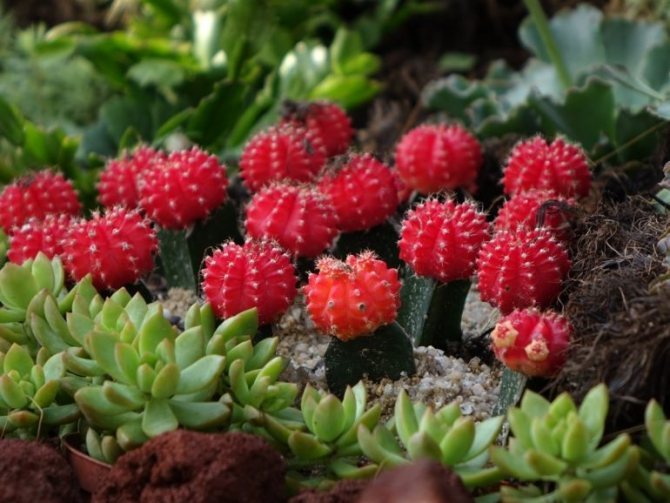

This succulent has a flattened stem reaching a height of 5 cm. It has 8-10 ribs with a pointed wavy edge. Its flowers are red or yellow.This species cannot take root on its roots, so it is grafted onto green varieties.
Gymnocalycium of Friedrich
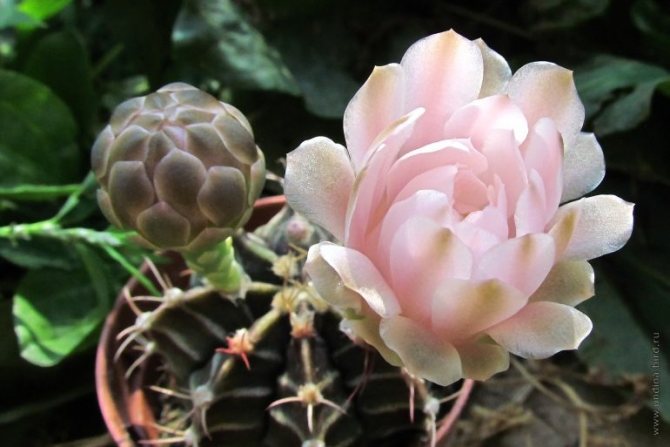

This is the "brother" of Mikhanovich's hymnocalycium. One of its varieties is crowned with a red spherical stem, which many take for a kind of flower. The popular name of this cactus is "Little Red Riding Hood", and there is no need to explain the reasons here.
Gymnocalycium Andre
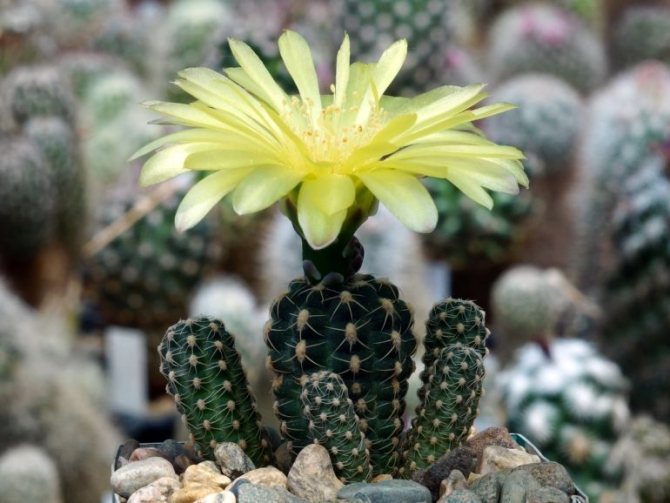

Its small flowers create bushes with many bright yellow heads. This cactus is grown in groups in a flat container. This species does not tolerate abundant watering and excessive solar radiation.
Gymnocalycium Baldianum
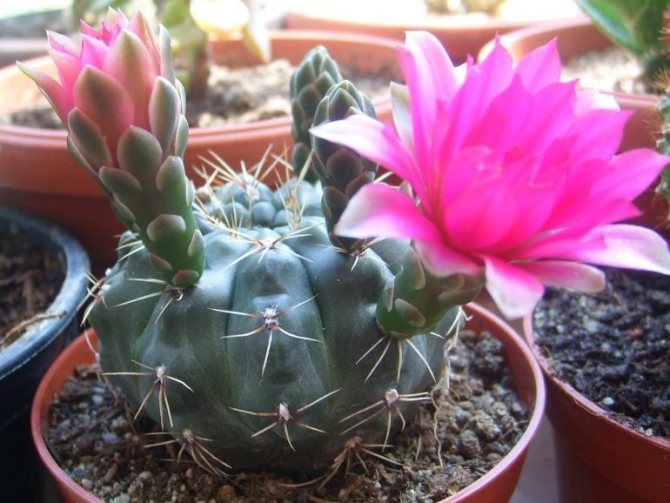

This species is known for the early appearance of flowers: already at the beginning of summer it is decorated with purple flowers. The stem of the cactus is green with a bluish tinge.
Gymnocalycium Naked
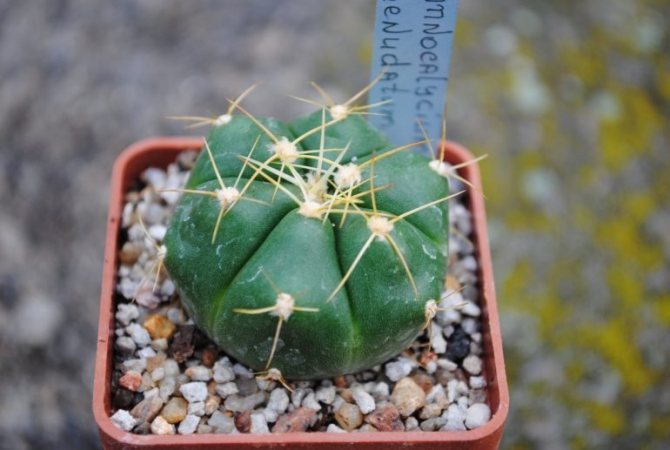

Its distinctive feature is a spherical dark green stem and side shoots. Its flowers are large, white or light pink, placed closer to the crown.
Gymnocalycium humpbacked
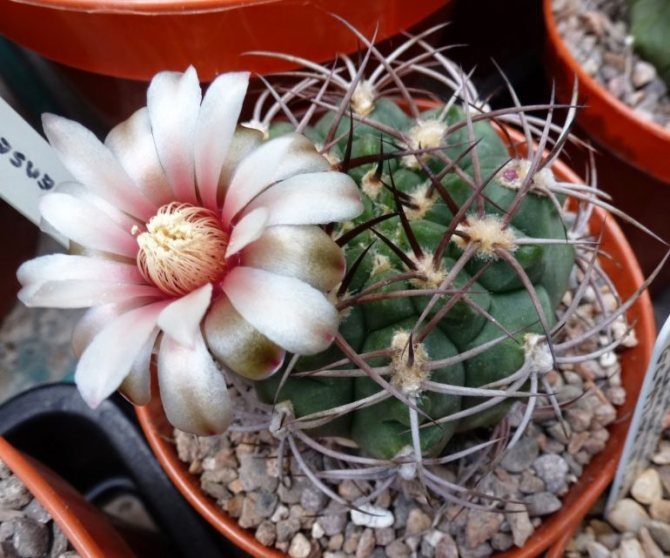

The stem of this cactus is spherical, reaching a height of 20 cm and a diameter of 10 cm. Its flowers are pinkish or white.
Gymnocalycium Quel
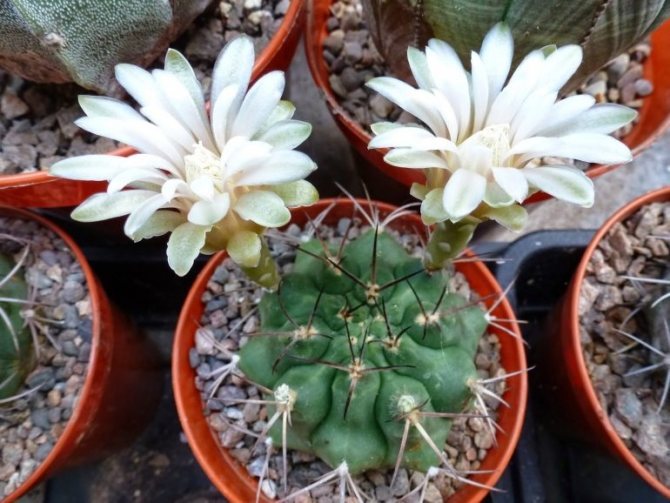

This species is characterized by slow growth, vulnerability to excess moisture, and white flowers that appear on an elongated tube.
Proper care of cacti in winter
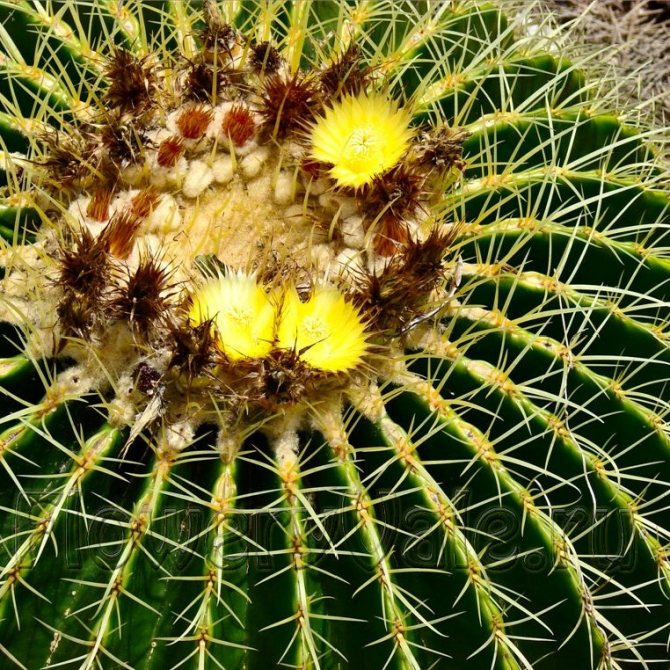

In winter, cacti need to be properly cared for in order for them to bloom in the spring. Mostly, cactus care comes down to a cool dry wintering.
Cactus Is a very special kind of indoor plants. They require very little attention, almost do not need watering and are very compact: a whole collection of representatives of this very motley family can be accommodated on the windowsill. But cacti will deliver real pleasure if they bloom.
There are three paths that can lead you to your goal: a cool winter rest, grafting, or the right species selection. Everyone chooses their own path, just like in a fairy tale)).
There are cacti that form buds and flowers after wintering on the window in a warm room. These are most of the species of the following genera: Notocactus, Gymnocalycium, Melocactus, Parodia, Rhipsalis and Aporocactus.
However, they also need a period of rest. Watering should be sharply limited: from November to early March, give water a maximum of once every 3-4 weeks, literally in drops, only so that the cacti do not wrinkle much. Top dressing stops completely. Make sure that no hot air flow from heating devices gets on the cacti: the window sill should be wide enough, and place the cacti closer to the cold glass. Ideal is a window under which there is no heating battery. The nighttime temperature drop is also favorable.
All other cacti do not bloom without cold wintering.... Mammillaria and rebuts from November, you need to find a place on a bright, best sunny window, where the temperature does not rise above 15 ° C, the cooler, the better and the shorter the dormant period. And although this is difficult to accomplish, there has been no watering since November. Plants are transferred to a cool place only after the ground is completely dry, so that such transfer does not lead to damage to the roots. Therefore, watering is gradually reduced from October.
However, you need to constantly monitor your pets: if the stems of cacti are very wrinkled, then in order to avoid drying them, you can sprinkle the cactus a little or pour it from a pipette - just a few drops. This will be enough to cheer up a little. Even two or three extra drops of moisture at low temperatures can cause rotting of cactus stems.
However, there are exceptions to every rule! Schlumberger can be considered such an exception. It is in winter that it needs to be watered once a week, and the earthen mixture for it should be more fibrous than for ordinary desert cacti.
At the beginning of March, the dormant period for cacti ends. At first, cacti are only sprayed with water, and then little by little they begin to water again.
If your cactus, in spite of everything, does not bloom, this cannot be a cause for grief. Some of these thorny creatures only flower in old age. They have peculiar distinctive features: white pubescence, like in a columnar cereus (Cereus), or spines of golden yellow color, like in a spherical echinocactus Gruson (Echinocactus grusonii). Even without flowers, they will be a great addition to your blooming collection.
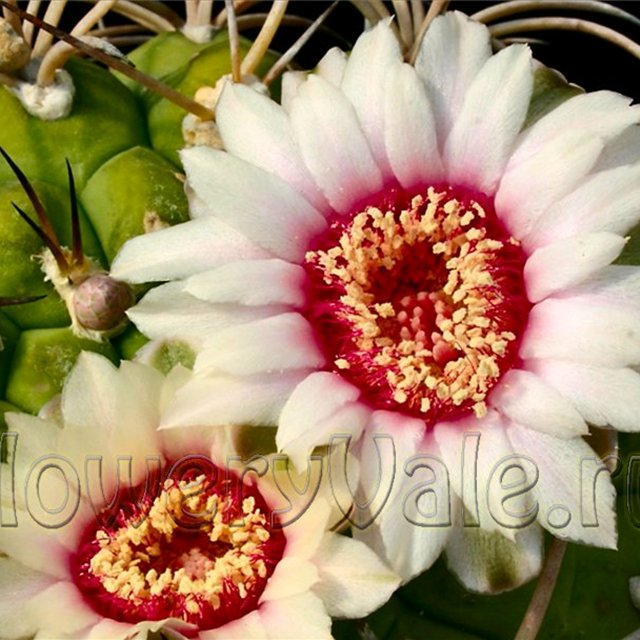

So that cacti, despite the warm winter, do not bring grief instead of joy, choose suitable residents for the heated room: thermophilic melocactus (Melocactus matanzanus), parody (Parodia ayopayana), hymnocalycium: pink Gymnocalycium friedrichii, light white G. Damsii and cream G. Damsii. Vatterii; papillary notocactus (Notocactus mammulosus) with apricot flowers, unpretentious lemon-yellow parody beautiful (Parodia Formosa), Otto's egg-yellow notocactus (Notocactus ottonis). Other types of cacti belonging to these genera are also suitable for a warm room.
The light pink flowers of Friedrich's hymnocalycium emerge from young areoles near the apex. Mini cacti with maxi flowers. Rebuts are dwarfs among cacti. Red, like a traffic light, flowers almost completely cover the plant with many lateral shoots. When the rebutia blooms, the prickly body of the cactus under them can no longer be seen. The orange-red flowers contrast beautifully with the white pubescence of the rebucius. The buds will appear only after completely dry and cool wintering of plants. Zygocactus is ideal for a semi-shaded room window. In December and January, it is watered a little, but they make sure that the plant does not dry out. This stimulates flowering. The whimsical cleistocactus "Cristata" lives on the windowsill without any problems.
Be careful - small thorns are often more insidious than frightening-looking thorns, as they easily break off and get stuck in the skin when touched. Remove them with tweezers.
Be careful with prickly pears! Their tiny spines sit in a bunch and immediately dig into the skin. It is also best to carefully pull them out with tweezers.
Are you hooked? Such thorns with hooks, as, for example, in mammillaria, need to be pulled out without jerking your hand, but on the contrary, slightly pushing it back to the cactus.
See also: Grafting cacti, Desert Corner on the Window
Features of room care
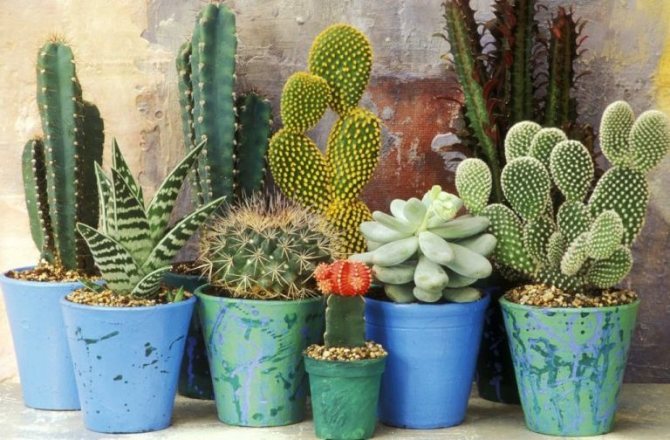

In the event that you purchased this plant not to protect yourself from radiation, but to decorate the apartment, then try to choose the most suitable place for it.
Desert cactus species require a lot of sunlight. In this regard, experts advise that they should be placed on a window with a southern or eastern orientation. And varieties of forest cacti, including zygocactus, are recommended to be placed on windows with a north or west orientation. If you place a Christmas tree on a south-facing window, then its leaf plates will become faded, and failures will begin between the periods of flowering and dormancy.
In summer, these plants are best taken out into fresh air (balcony). If in winter time it is very warm in the apartment, then for cacti it is necessary to maintain high humidity. However, it should be borne in mind that in winter, almost all varieties of cacti have a dormant period. In this regard, it is recommended to transfer them to a cool room (from 15 to 17 degrees) and place them in partial shade or shade.
Although the plant is drought-resistant, it cannot be watered at all. It is allowed to skip one watering, but it is better to carry out this procedure as needed and do not forget that the cactus, like all other plants, needs water. For watering, you must use water at room temperature, which must be defended throughout the day.If possible, it is recommended to water the cacti with rain or melt water.
Approximate watering plan:
- in spring and summer - daily or once every two days;
- autumn period - once every 5–7 days;
- winter period - once every 1–1.5 weeks.
The basic principle of watering is that the more abundant and more often the watering will be, the warmer it is in the room.
It should also be remembered that the cactus grows actively in the warm months, while it begins to bloom in the cold season. In the event that you want your cactus to bloom, then he just needs to arrange a dormant period.
How to care for a small cactus
Cactus have a very small root system that rots easily. Therefore, children need to be transplanted into loose soil, on the surface of which water does not stagnate. If moisture quickly passes through the substrate and ends up in the pan, then the soil is selected correctly. It is better to buy ready-made soil in the store - any desert varieties grow well in it.
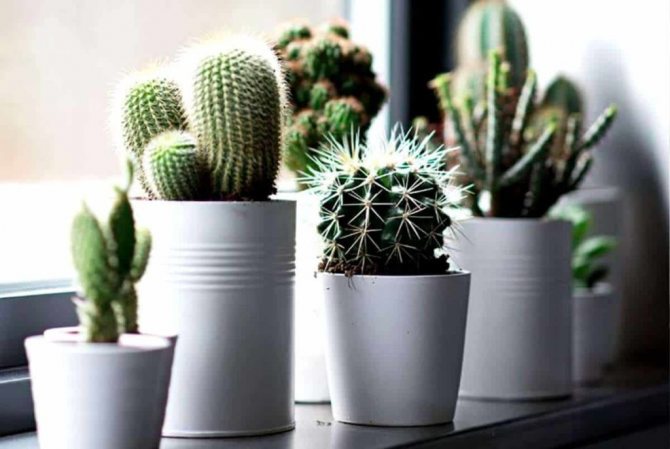

The most destructive mistake is to put cactus cubs on a cold windowsill in winter and water them. This will certainly cause root rot, and all plants will die.
In order for the children to take root and grow faster, they need to be fertilized. Complex fertilizers for succulents are produced. They need to be bred according to the instructions and used in the warm season once a month. In winter, feeding is not needed. If you take a flower out into the fresh air in the summer, preferably in a garden or country house, it will grow much faster.
Pests and diseases


Red flat tick
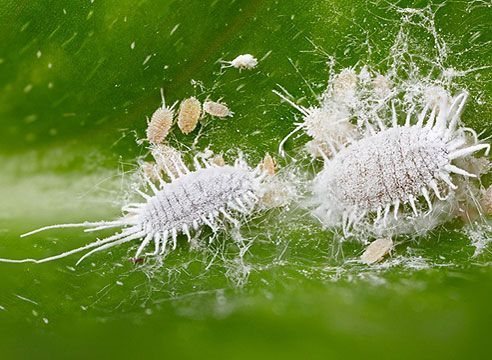

Mealy chervets


Scabbard This type of cactus can infect several three main types of pests:
- Mealybug - externally manifests itself in the form of loose secretions, structured like cotton wool. For 10-15 minutes, they are washed with hot water (about 400C), after which they are watered with an insecticide. It can be treated with an alcoholic tincture of calendula or an infusion of garlic, the interval of such treatments is 7-9 days, within a month.
- Red flat mite - when dry rusty marks appear on the green flesh, it can be understood that the cactus has been hit by a tick. The flower is washed with hot water and rubbed with alcohol.
- Scabbard - this pest sucks out juices, the main external sign will be the appearance of yellow spots at first, which then increase in size and the plant dries up completely. Alcohol with soap helps well - 15 grams of liquid soap, 10 ml. alcohol and 1 liter of warm water, soak a cotton swab or brush in this solution and wipe the entire surface of the succulent.
The most dangerous disease for representatives of the hymnocalycium is rhizome decay. This happens due to excessive moisture, in order to avoid the development of such a pathological process, it is necessary to monitor the humidity indicators. If this has already happened, then the plant is removed from the soil, the root system is slightly dried and planted again in new soil. The frequency of watering is strictly monitored.
Water quality
Even inexperienced flower growers know that indoor flowers should be watered with water at room temperature, purified from harmful impurities. These are the basic requirements for water for irrigation of any ornamental plants. Cacti, on the other hand, like water with the following parameters: soft, acidic or slightly acidic, without lime.
The appearance of whitish spots on succulents, especially on their lower part, is an alarming sign. This is most likely due to the fact that the plant is watered with water with a high lime content. The affected areas not only spoil the appearance of the flower, but also disrupt the respiratory processes.
If the water is too hard, you can soften it by adding a cloth bag of charcoal or a few tablets of activated carbon while standing.
It is important! Cold water is harmful to all indoor flowers, especially succulents, which have a shallow root system.Watering with such moisture causes shock at the roots, which leads to a slowdown in the growth of a cactus or even its death.
You can water the flowers with rain or melt water, this is the best option, provided that moisture is collected far from various industries and transport routes.
It is recommended to irrigate with water enriched with silver ions once a week. You can make it yourself by lowering any silver object for at least a quarter of an hour.
The most accessible water for city dwellers, drawn from a tap, is also suitable. But, it should be defended for at least 2 days so that chlorine and other harmful impurities evaporate.
But there is also some water, which is not advisable to water both cacti and other flowers at home:
- Well water - it is too saturated with minerals, the excess of which will not benefit the plants.
- From a freshwater reservoir (rivers, lakes, etc.) - most often it is a breeding ground for viruses, bacteria and other pathogens.
- Distilled and boiled - are considered "dead", devoid of useful elements, and in the latter case, oxygen.
In addition to the mode and quality of water, it is also worth paying attention to non-standard situations in which it is necessary to water the cacti, or vice versa - it is contraindicated.
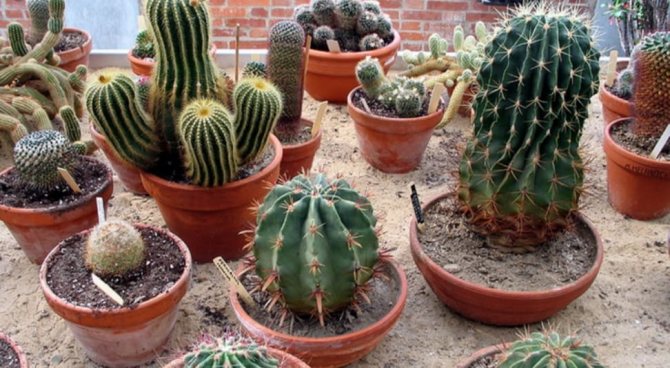

Transplanting cacti
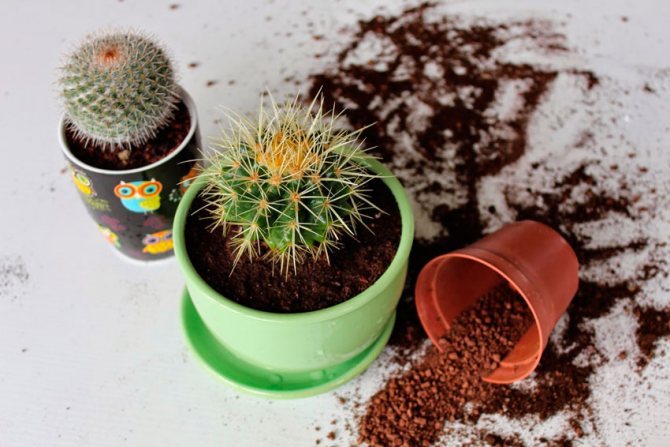

It is necessary to transplant a cactus only when it becomes cramped in the pot. This procedure is carried out in the spring, at a time when the period of intensive growth begins. 2–3 days before the transplant, the cactus should be stopped watering, since the soil should freely crumble from the roots. In order not to hurt yourself on the cactus, it must be wrapped in several layers of paper or high-density fabric.
Young specimens require an annual transplant, and those who are 3 or 4 years old need this procedure once every few years.
The container for planting must be chosen compact, so that the root system fits into it, and there is no empty space. At the bottom of the pot, you need to lay out a drainage layer and add a small amount of the substrate. After that, you need to hold the plant with your hand and lower its roots into the container. At the same time, with the other hand, you need to slowly pour the soil into the container until it fills the pot. In this case, the surface of the soil should be one centimeter below the edge of the container. The base of the stem must not be buried in the substrate. In order to pour the soil into the pot more densely, you need to systematically tap on its walls. The optimal composition of the soil mixture for this plant: washed river sand, peat, leaf earth and charcoal. The soil needs slightly acidic and loose. If desired, you can buy soil mixture for cacti in a special store.
How much to water cacti
There is no standard watering regime for all types of succulents. The amount of water, its quality, and the frequency of irrigation are influenced by many factors.
However, a few basic rules can be formulated:
- It is better to dry out than overflow. The main sign of a flooded plant is its shrinkage and wilting.
- Succulents are watered only when they are absolutely healthy and in an active growth period. In the dormant stage or after illness, moisture introduced into the soil can destroy the plant. A blooming cactus requires watering almost daily.
- The succulent watering mode is closely depending on the season.
- Watering is carried out only after complete drying out the soil in a bowl.
- Do not water the cacti during the dormant period, leaving them dry cool room and low light.
- These flowers do not need spraying. It can only be carried out for reasons of aesthetics and for the purpose of hygiene, in the event that dust has accumulated on them. The water is taken warm and sprayed from a very fine spray, which produces almost mist, not spray.
There are two ways to water plants: from above, using a watering can, or from below, filling the tray with water. Both options have positive and negative sides. In cacti, the root system goes deep enough, so "sump" watering will be preferable.
But this method makes it difficult to control the amount of water. Therefore, for beginners, it is recommended to use top watering, while carefully watching so that the water does not flood the stem, and the top layer of the earth does not alkalize.
After the winter period of drought, the soil sometimes does not absorb water, which flows down the sides into the sump. In this case, the water can be left in the drip tray for gradual absorption. At other times, it needs to be drained. Watering will be no less effective by immersing the pot in a container with water heated to 40 ° C for 15 - 20 minutes, which will help the soil to soak faster.
It must be remembered that only healthy roots can take moisture from the soil, therefore it is undesirable to water transplanted cacti. It should be kept for about a week, allowing the roots to rest after the stress suffered.
Reproduction
The most popular breeding methods are seeds and cuttings (“babies”).
Seeds
This method is very laborious, but also more reliable. It allows you to get strong and healthy sprouts. The correct preparation of the soil substrate is more than half the success. Fine-grained soil should be composed of peat and sand. In order to exclude the occurrence of diseases, it is advisable to ignite the mixture in the oven for about three hours. The cooled layer is laid out in containers, seeds are on top, then sprinkled with a layer of soil.
It is necessary to constantly maintain optimal humidity and temperature conditions - about + 200C. The first shoots appear in two weeks. Young shoots are planted in separate pots after a year.
Layers
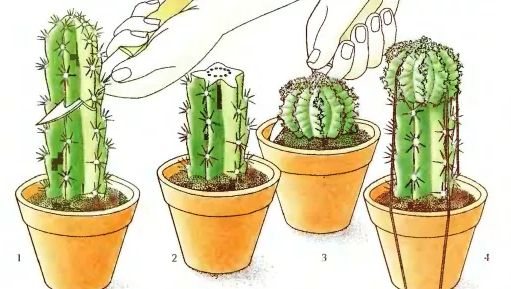

Often, during the period of active growth, a cactus forms lateral processes that are easily separated from the mother plant. They tend to take root quickly. It is necessary:
- cut off the side shoot, "baby" with a sharp blade;
- keep it in a dry room for about a day;
- place the "baby" in moist soil;
- in the future, take care of the usual way as for an adult succulent.
Basic rules and conditions for watering cactus plants in general: how to water a cactus at home
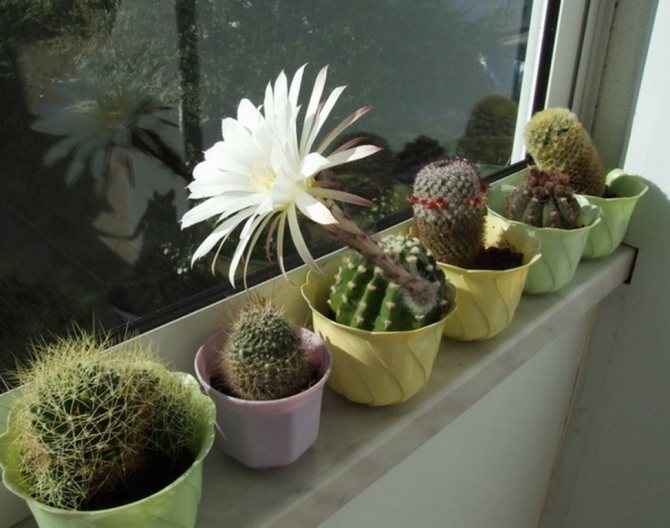

Whatever one may say, novice cactus growers often have many questions, the root of which is how to water a cactus, how many times a week or a month this will have to be done, and what mixtures it is better to use, or simply limit yourself to ordinary tap water, and a lot others. It is the correct and balanced watering that will be a real foundation for the future, the key to successful rapid growth, and in the case of the cultivation of flowering breeds, also the reason for the correct and timely setting of buds. Indeed, you will have to thoroughly figure out how often you need to water the cactus, as well as the answers to other questions, if you actually decided to go into cultivation and cultivation.
Important
There are some simple rules to ensure proper watering of cacti at home, which must be taken into account so that your plants do not die before they even reach maturity. First of all, this concerns the fact that the jet of liquid never falls on the stems of the plant. Hardly at home, the weather indulged these strange, as if unearthly plants with frequent precipitation, because they probably do not like such a phenomenon, and may even rot.
In fact, if it seemed to you that watering cacti in winter and summer is as easy as shelling pears, then you are deeply mistaken, this is a rather serious and responsible process that you should definitely study in more detail so as not to ruin your hobby, forgive the pun, on root. There are two main methods of how to water a cactus so that it grows strong and healthy, and its flowering species also form juicy and beautiful buds.
It is very important to remember that special heating of cactus pots can give excellent results, immediately after watering. Moreover, the heater must be turned on to the minimum mode while the soil absorbs moisture, and then it must be turned off until it is dry again. You should also always take into account the weather conditions outside the window. On cloudy and rainy days, it is better to postpone watering the next morning, and on hot sunny days, it is advisable to water cacti and succulents in the evening.
Watering on the surface of the soil or substrate in a pot: how to water cacti
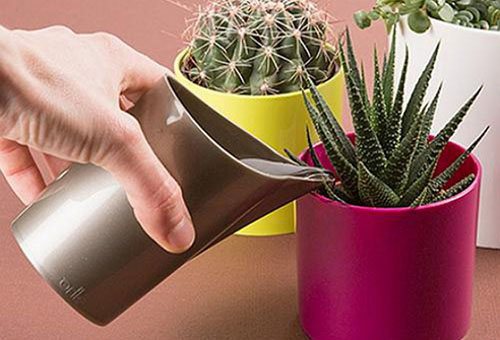

If you decide to thoroughly figure out how to water cacti at home in winter or summer, you should first figure out that pouring water directly into the pot from above is actually not the best solution. First of all, you need to understand that protecting the stems from droplets by watering the plants in this way will be far from easy, and this is the first of the negative factors that must be taken into account.
It is very important that when watering, the entire earthen lump is completely saturated, that is, from top to bottom, saturated with moisture, or even, one might say, saturated with it. Moreover, it is better to shed once so as to get the perfect result than to do it often and little by little. It is clear that this is due to the natural conditions for the growth of cacti, because it rains rarely in the climate of South American countries, but it is abundant and is able to saturate the stony soil with moisture for a long time.
Watering from the bottom into the pallet: how to water cacti in winter and summer
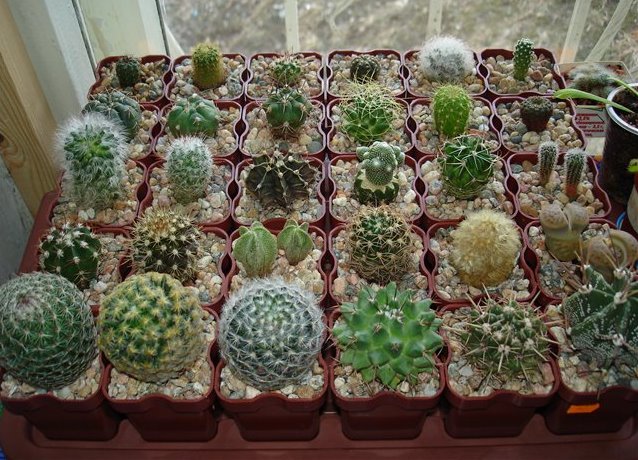

The second option is already much more acceptable, primarily because the risk of a stream of water falling on the cactus stalk is completely eliminated, which can make it sick, or even die. It is also very important that with this type of watering, the earthen clod at the base of the stem does not erode, therefore, nutrients and minerals are retained in the substrate much longer, providing cacti with conditions for much more active growth and development. With the right choice of a pot or other container for growing cacti, its root system, which is not very long and branched, should almost reach the bottom of the pot.
It is there that all the necessary moisture will be absorbed, as well as those very nutrients, therefore watering from the pan will be most justified at any time of the year. Moreover, the water at the base of the stem will definitely not bring anything good, especially if it bare it, which is unacceptable. Among other things, it is worth considering that when growing a sufficiently large number of cacti, you can greatly facilitate your life and the watering process if you install all the pots on a single pallet, where you add water.
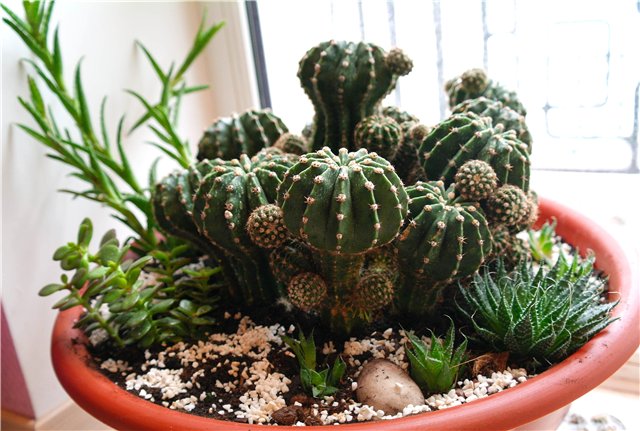

True, this method also has several disadvantages, which, however, are not commensurate with the advantages, however, they must be understood and taken into account. For example, individual care of each plant separately in this type of watering will be somewhat difficult, and it will be almost impossible to control how much water gets into each pot. With years of experience, everything will become more transparent and over time you will begin to feel intuitively how often to water cacti in winter and summer, how much liquid to use, and so on. In the meantime, it makes sense to purchase a special device for measuring the moisture content of the substrate and not worry about trifles.


